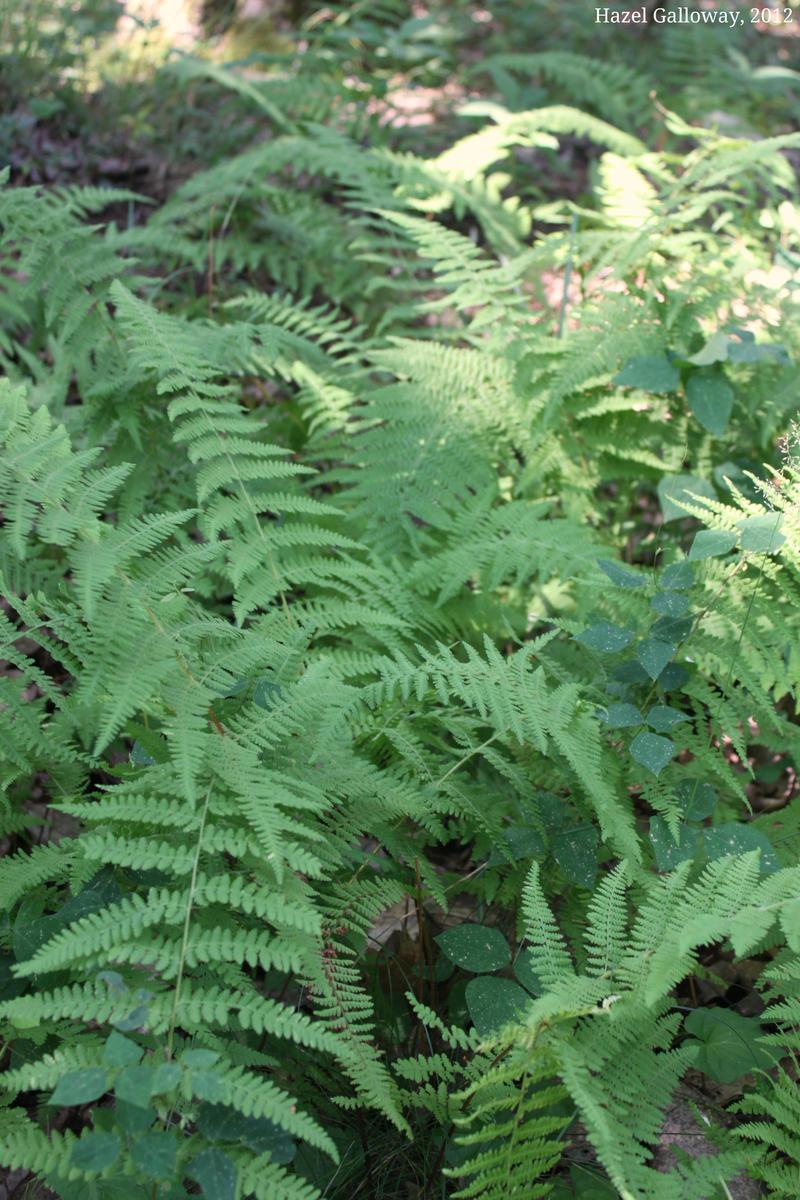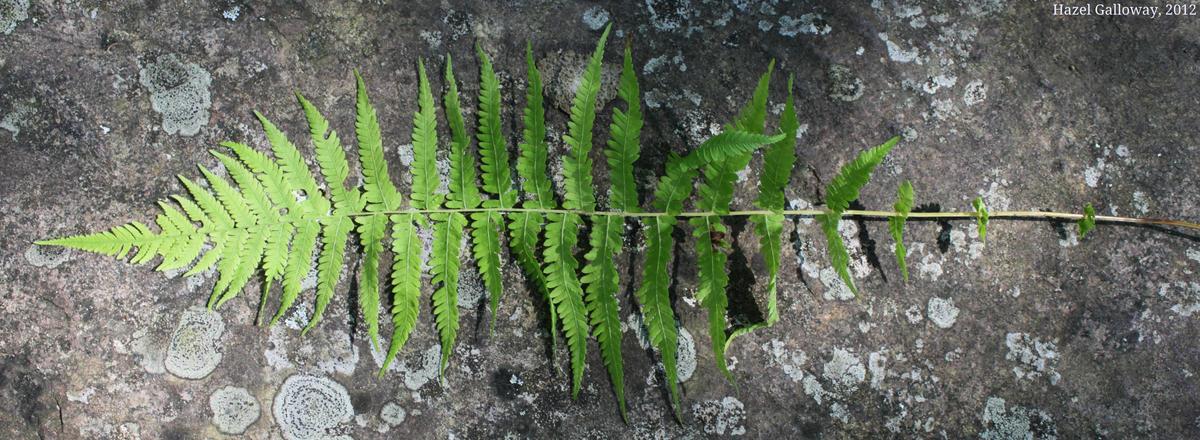
The eastern hay-scented fern constitutes a great deal of the general carpet of ferns that one can see when looking out from the station in nearly every direction. Around here, it is often small, feathery, and wispy, although it can grow to the height of 90 cm (3 ft) in some areas. Its yellow-green fronds are about ⅓ as wide as they are tall; the pinnae (leaflets) taper to a divided point at the top of the frond but only taper very slightly at the bottom. Each leaflet itself is pinnate—that is, it is divided into 10-20 “subleaflets” of its own. Each subpinna, in its turn, is lobed; the effect of leaflets upon leaflets upon leaflets is what gives this fern its lacy, wispy appearance.


On the backside of the leaflets, small cup-shaped sporangia (spore-producing bodies) exist. During the summer and fall, spores are produced in these sporangia and distributed widely by the wind. Where these spores fall, they mature into free-living, haploid gametophytes—that is, they have only one copy of their chromosomes. These gametophytes resemble tiny, heart-shaped leaves growing out of the soil. When these gametophytes mature, they will produce eggs and sperm and fertilize either themselves or others. After fertilization, the haploid gametophyte develops into a diploid sporophyte, or the recognizable mature fern.
This fern is widely distributed across the eastern US and Canada. Although in some areas it forms aggressive mats across the forest floor or open areas, it generally prefers shade and can be found in clumps or patches. It is tolerant of very poor soils and full shade, provided that there is consistent moisture. These ferns often spread by rhizomes (“fern roots”) to form vegetative colonies. They are deciduous, and die back in the late summer or fall.
The hay-scented fern is so named because of a distinctive smell, similar to fresh hay, which can be created by walking through and bruising the ferns. They produce a similar, pleasant scent when they are dried in bundles indoors.
York Fern
Thelypteris noveboracensis

The New York fern is very similar to the hay-scented fern in many respects. Although its maximum height—around 60 cm (2 ft)—is somewhat less than the hay-scented fern, neither species grows to be much taller than 30-45 cm in this area. Unlike the hay-scented fern, which tapers only very slightly at the lower end of a stalk, the New York Fern tapers gradually at both ends of the stalk. This difference, the most distinctive between the two, gives rise to the mnemonic that “New Yorkers burn the candle at both ends.” A second distinctive difference is that New York ferns lack the final subdivision of their subpinnae—that is, the leaflets upon leaflets are not lobed. In all other respects, however, from their general appearance to their life cycle to their preferred habitat, this fern is hard to distinguish from the hay-scented fern. However, they have no scent.


Both samples were found behind Clayton.
